Earth Science and Engineering
Dust shifts and strengthens tropical rain belt
Dust plays a critical role in determining rainfall over the Middle East and North Africa.
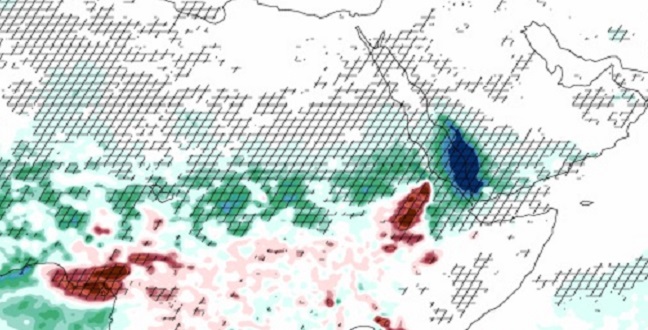
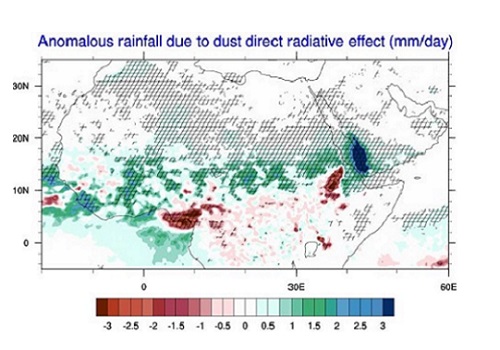
Simulated summer rainfall shown as the difference between rainfall with and without dust. Hatched regions show areas with statistically significant differences when the effect of dust is included.
Reproduced with permission from Ref 1.© 2015
Atmospheric dust has a strong influence on the position and strength of the tropical rain belt over the Middle East and North Africa, reveals an advanced global atmospheric model study conducted by KAUST researchers1.
The model covers the globe using a grid with a spatial resolution of 25km to measure the influence of dust on rainfall. Such a fine scale is quite unique for the study.
“Counter-intuitively, the Saharan dust actually increases precipitation in the Sahel region in summer,” said Georgiy Stenchikov of the KAUST Physical Science and Engineering Division.
The rainfall has a major societal and economic impact on the region, which covers the transition zone between the Sahara desert to the north and the delicately ecologically balanced tropical grasslands to the south.
“Climate in this area is characterized by the Sahel drought, which can cause population loss, ecological catastrophe, migration and political and social unrest,” Stenchikov explained.
Most of the dust in the atmosphere above this region is natural, such as sand from the Sahara, but human activities also contribute. During the war in Iraq, for example, the reduced use of agricultural land caused increased dust storms in Kuwait.
Dust generally has a heating effect on the atmosphere and a cooling effect at the surface due to the absorption and scattering of incoming solar radiation. Stenchikov and his Ph.D. student Hamza Bangalath ran a high-resolution atmospheric general circulation model with and without the radiative effect of the dust.
The study is currently focused on the summer season. The results indicate that dust strengthens the tropical rain belt across the Middle East and North Africa and shifts it northwards.
These effects are a result of the influence of the dust on specific atmospheric processes, including the local Hadley circulation, the African easterly jet and the West African monsoon. They increase summer rainfall over the semi-arid strip south of the Sahara desert by up to 20 percent, revealing dust plays a major role in sustaining the fertility of that region.
Stenchikov hopes that the model will help to better predict drought in the region and assist efforts to mitigate its effects. Future work will address the limitations of the model to increase its accuracy and usefulness. A main limitation is that it focuses only on the atmospheric responses to the direct radiative effects of dust.
The researchers plan to add the ocean response and indirect radiative effects associated with the modification of the optical properties of clouds by dust particles. Cloud microphysics, vertical stability and relative humidity may all be important, Stenchikov noted.
References
- Bangalath, H. K. & Stenchikov, G. Role of dust direct radiative effect on the tropical rain belt over Middle East and North Africa: A high-resolution AGCM study. Journal of Geophysical Research: Atmospheres 120, 4564–4584.| article
You might also like
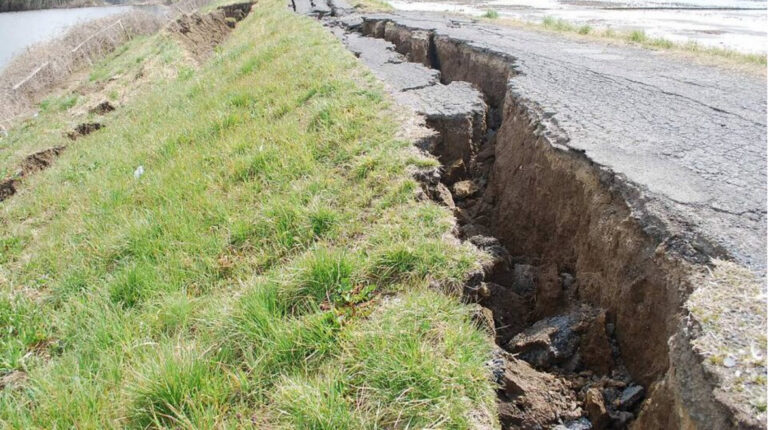
Earth Science and Engineering
When Earth breaks the “rules”
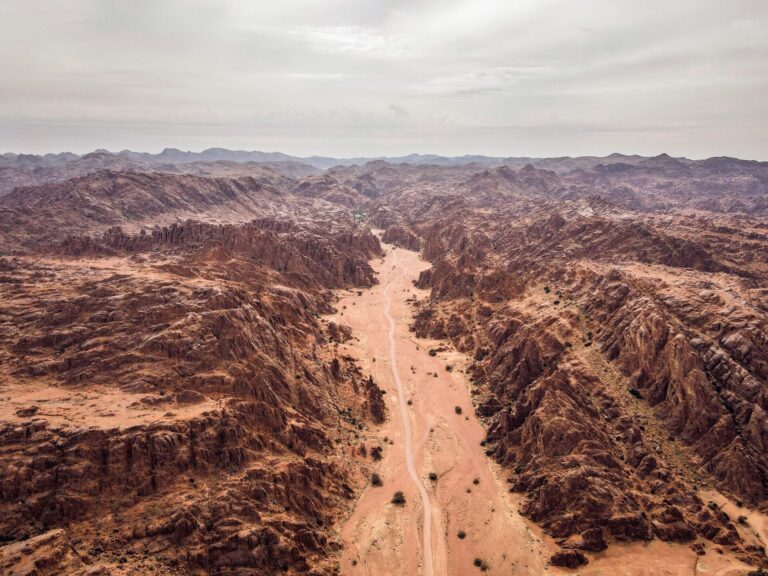
Earth Science and Engineering
Unearthing Arabia’s ancient foundations: New insights from the Ha’il terrane
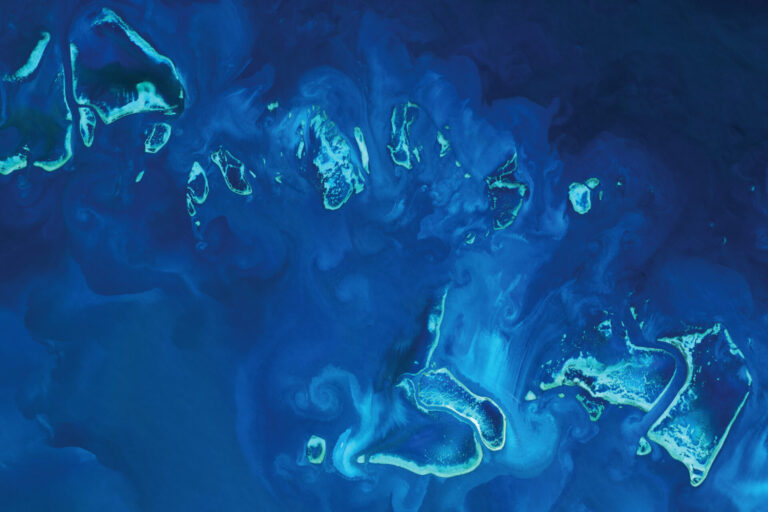
Earth Science and Engineering
Sensing color cues to monitor coral health in the Red Sea
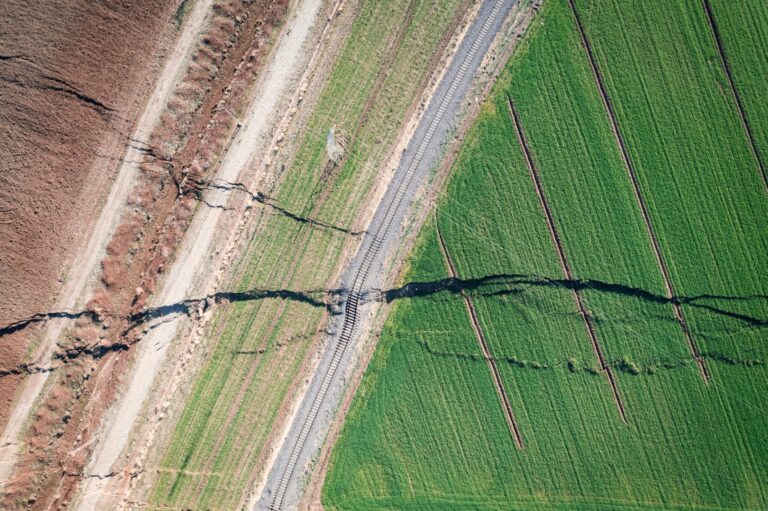
Earth Science and Engineering
Kahramanmaraş earthquake study showcases potential slip rate errors

Chemical Engineering
Unveiling the role of biomass-burning aerosols in atmospheric reactions

Earth Science and Engineering
Feeling the heat across the Middle East
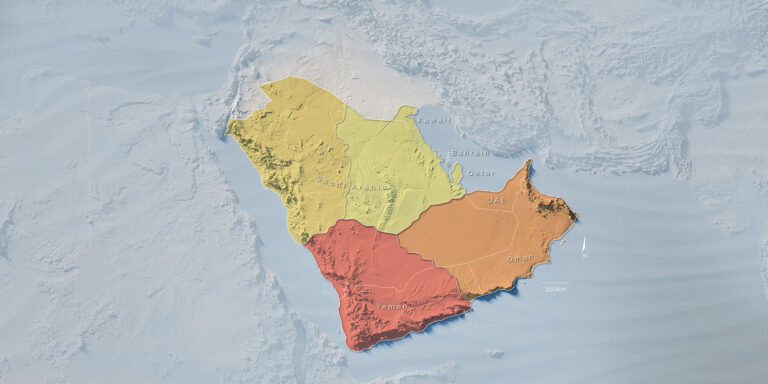
Applied Mathematics and Computational Sciences
Past and future drought patterns across the Arabian Peninsula

Earth Science and Engineering



